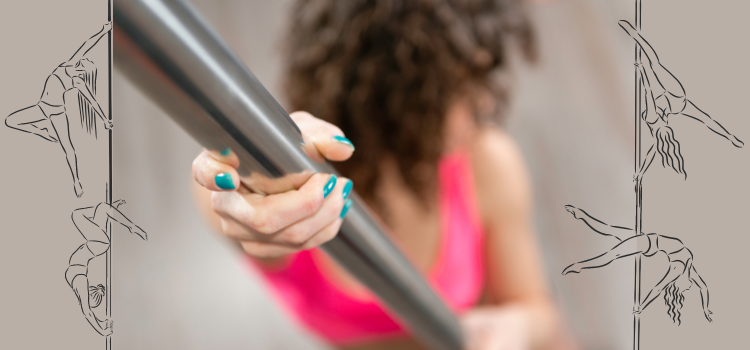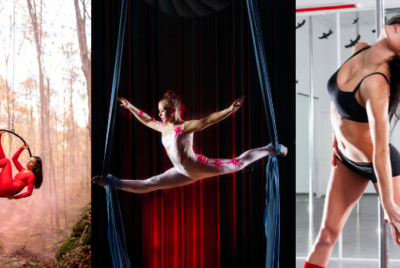Pole Grip Techniques: Enhance Your Pole Dancing Performance
Introduction
Hey there, fellow pole enthusiasts! If you’re passionate about pole dancing like me, you know that having a solid pole grip is essential for nailing those gravity-defying moves. In this article, I’ll be sharing some valuable insights and suggestions regarding pole grip techniques. Whether you’re a beginner or an experienced pole dancer, this guide will help you enhance your pole grip and take your performance to new heights!
Understanding Pole Grip Techniques
Let’s start by understanding what pole grip techniques actually means. Pole grip refers to the way your hands and body adhere to the pole during various moves and tricks. It plays a crucial role in maintaining control, preventing slips, and executing movements with precision. Good pole grip enables you to execute challenging tricks confidently and safely.
Importance of Pole Grip Techniques
Having a strong and reliable pole grip is vital for a multitude of reasons. Firstly, it ensures your safety by reducing the risk of slipping or falling during complex moves. Additionally, a proper grip helps you maintain balance, allowing you to execute moves more gracefully. Moreover, a solid pole grip enhances your overall performance and enables you to progress faster in your pole dancing journey.
Different Types of Pole Grip Techniques
There are many types of pole grip techniques commonly used in the pole dancing community. Let’s explore a few basic ones, bearing in mind that pole grip techniques may have different names depending on where you train:
- True Grip: In this grip, your hand is positioned with the thumb on one side of the pole and the remaining fingers on the opposite side. True grip offers excellent control and is often used for more advanced tricks and inverted moves.
- Cup Grip: This grip involves wrapping your hand around the pole with your thumb on top and fingers on the bottom, creating a cup shape. It provides a secure hold and is commonly used for basic spins and static poses.
- Twisted Grip: The twisted grip is a variation of the split grip where the wrist is rotated, and the hand is positioned diagonally on the pole. This grip is often used for advanced tricks that require a higher level of strength and flexibility.
Choosing the Right Pole Grip Techniques
Selecting the right pole grip technique for each move is crucial. Factors such as the type of trick, the condition of your hands, and your personal preferences should be taken into account. Experiment with different grips during your practice sessions to find what works best for you. Remember, there’s no one-size-fits-all approach when it comes to pole grip, so don’t hesitate to explore and find your comfort zone.
Proper Pole Grip Techniques
While having the right grip is important, mastering the proper technique is equally essential. Here are some key points to keep in mind:
- Hand Placement: Ensure that your hand is positioned securely on the pole, distributing the pressure evenly across your fingers and palm.
- Thumb Pressure: Apply moderate pressure with your thumb to create a firm hold without straining your hand.
- Wrist Alignment: Maintain a straight alignment of your wrist to prevent unnecessary stress and potential injuries.
- Body Contact: Make sure to have ample body contact with the pole to improve stability and control during spins and tricks.
Maintaining Pole Grip
To maintain a consistent and reliable grip, it’s important to take care of your hands. If required, moisturise your hands with a non-greasy lotion to keep them hydrated, but always avoid using lotions or creams immediately before your pole sessions, as they can leave a residue on the pole, making it slippery. Additionally, keep your nails short and smooth to prevent any scratches or snags that could affect your grip. Taking care of your hands and keeping them in optimal condition will greatly contribute to maintaining a strong and reliable pole grip.
Common Pole Grip Technique Mistakes
Even experienced pole dancers can fall into certain grip-related pitfalls. Let’s highlight a few common mistakes to be aware of:
- Gripping Too Tight: While a secure grip is essential, gripping the pole too tightly can lead to unnecessary tension and fatigue. Maintain a firm but relaxed grip to enhance your control and fluidity of movement.
- Neglecting Conditioning: Neglecting hand and arm conditioning exercises can result in weaker grip strength. Incorporate exercises such as wrist curls, finger stretches, and forearm exercises into your training routine to improve your grip endurance.
- Ignoring Hand Warm-Ups: Failing to warm up your hands before a pole session can affect your grip. Perform hand stretches and rotations to increase blood flow and flexibility, ensuring better grip performance.
Tips for Improving Pole Grip Techniques
Now, let’s delve into some practical tips to help you improve your pole grip:
- Use Grip Aids: Grip aids such as grip powders, liquid chalk, or grip-enhancing gloves can provide an extra layer of traction, especially if you have naturally sweaty hands. Experiment with different grip aids to find the one that works best for you.
- Build Grip Strength: Incorporate exercises that specifically target grip strength, such as hanging from a pull-up bar or using grip strengtheners. Another great way to improve grip strength is to cross train in fun activities such as rock climbing. A safe and enjoyable environment to do this would be indoor wall climbing. Regular strength training exercises will help you develop a stronger grip over time.
- Practice Specific Moves: Focus on practicing moves that challenge your grip. By repeatedly executing these moves, your grip strength and endurance will gradually improve.
- Take Breaks: If you notice your grip weakening during a practice session, don’t push yourself to the point of exhaustion. Take short breaks to allow your muscles to recover and regain their strength.
Conclusion
Mastering pole grip techniques is an essential aspect of becoming a proficient pole dancer. By understanding different pole grips, choosing the right grip for each move, and maintaining proper grip technique, you can enhance your control, safety, and overall performance. Remember to take care of your hands, avoid common grip mistakes, and implement tips for improving your grip. With consistent practice and attention to detail, you’ll undoubtedly witness significant improvements in your gripping abilities.
FAQs
Q1: Can I use grip aids during competitions or performances?
A1: It depends on the specific rules and regulations of the competition or performance. Some may allow certain types of grip aids, while others may have restrictions. Always check the guidelines beforehand.
Q2: How long does it take to develop a strong pole grip?
A2: The time it takes to develop a strong grip varies from person to person. It depends on factors such as individual strength, consistency in training, and the complexity of moves you’re aiming to achieve. With consistent practice, you’ll notice improvements over time.
Q3: Can I improve my grip if I naturally have sweaty hands?
A3: Yes, even if you have naturally sweaty hands, you can improve your grip. Experiment with different grip aids, consider using antiperspirant for your hands, and focus on conditioning exercises to strengthen your grip.
Q4: What should I do if I experience hand pain during pole practice?
A4: If you experience hand pain during pole practice, it’s important to listen to your body and take a break. Consult with a medical professional if the pain persists. Incorporating regular hand and wrist stretches into your warm-up routine can also help prevent hand pain and reduce the risk of injuries.
Q5: Are there any specific exercises I can do to improve my grip strength?
A5: Yes, there are various exercises you can incorporate into your training routine to improve grip strength and pole grip techniques. Some examples include hanging from a pull-up bar, using grip strengtheners or grip balls, and practicing exercises that involve squeezing objects tightly, such as stress balls or towels.
Remember, developing strong pole grip techniques takes time and consistent effort. Focus on proper technique, take care of your hands, and gradually challenge yourself with more advanced moves. With dedication and practice, you’ll continue to enhance your grip and excel in your pole dancing journey. Keep reaching for new heights and enjoy the exhilarating world of pole dancing!




